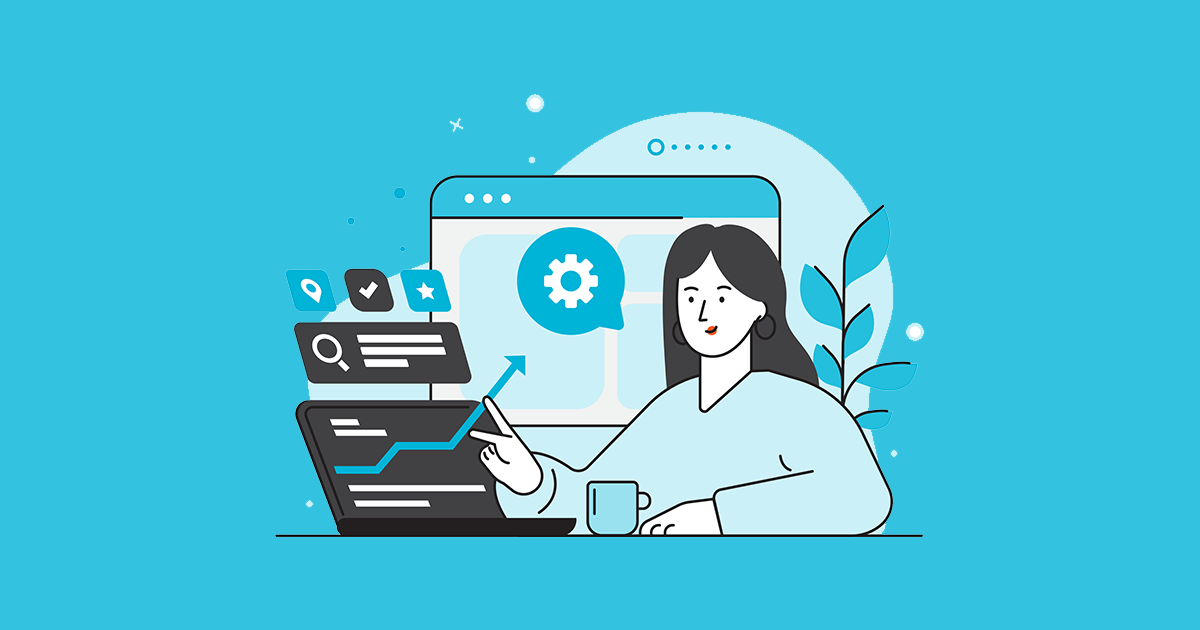4 Tips To Optimize Your Web Design For Conversion
A good website design is not only a good way to represent your brand, but it’s also a key tool for converting visitors into customers. But with the rise of mobile and the growth of websites that rely on big brands, many businesses are finding it harder than ever to stand out from the crowd and convert their website visitors into paying customers. In this guide, we will discuss four ways you can optimize your site for conversion: identifying conversion problem areas; making your site more personal; testing before going live; and finally, keeping everything simple.
The value of a good web design.
The value of a good web design.
A good website design can help you achieve your business goals and stand out from the crowd, but what makes a website “good”? A great web design conveys to consumers that your brand is trustworthy, reputable, and professional. It creates trust with visitors by providing them with clear information about the products or services you offer and how they can be purchased. The end result is that visitors will be more likely to do business with you because they feel confident in their decision to do so after seeing your site.
Identify the problem areas.
Before you start optimizing, it’s important to identify problem areas in your site. Think about the goals of your website and make sure that they are clear and specific. If you’re not sure what those goals should be, take some time to brainstorm and write down all of the things that are important to you.
After identifying these goals, create a list of pages on which they will be met by doing research into common conversion points for this type of page (i.e., “landing” pages). Consider using tools like Google Analytics‘ goal conversion report or Unbounce’s A/B testing tool if needed so that you can begin testing different options right away rather than guessing at what might work best based solely on intuition alone!
Make your website more personal.
Personalization is one of the most effective ways to engage your audience. When you personalize a website, it’s like having a conversation with your visitors. You can use their name and make it feel like they are talking directly with you. We have found that personalization increases engagement and conversion rates by up to 50%.
So how do you actually implement this on your website? In our experience, we have found these 3 tips will help:
- Use the visitor’s name in calls-to-action
- Use personalized design elements
- Personalize content based on user behavior
Test your site before going live.
When you launch a website, it’s important to make sure that it is working properly. You want to be able to see how your site does in real-world conditions before you put all your efforts into optimizing it for conversions.
This is where A/B testing comes in. With this method, you show more than one version of the same page (the “A” and “B” versions) at the same time and see which one performs better based on metrics like conversion rate or bounce rate. You can then use this information to improve the design of your pages so they’re optimized for conversion. When designing A/B tests, think about how people will interact with what they’re seeing on screen and ask yourself questions such as: Is there too much text? Are there enough images around them? Should I add another call-to-action button here? If something isn’t working well for users, then don’t hesitate to change up things until you find something that works better!
With the right approach, you can turn your website into a high-converting tool.
It’s important to note that a good design isn’t just about aesthetics. Aesthetics certainly matter, but they’re only one component of how users will interact with your website. The best way to optimize your web design for conversion is by creating an easy to navigate interface and focusing on user experience (UX).
We’ve seen time and time again that the best results come from optimizing a user’s experience over anything else. Even if you have the perfect product or service, delivering it in a way that makes it difficult for users can ruin everything you’ve worked so hard on. If you want to see dramatic improvements in conversions, focus first on improving your UX before anything else!
Web design is an essential part of any marketing strategy. Whether you’re looking to attract new customers or boost sales, it’s important to consider how your website looks and feels to visitors. A well-designed website can help make your business more memorable and increase the likelihood of conversion. By following these four tips, you can take advantage of everything that web design has to offer!
4 Tips To Optimize Your Web Design For Conversion
A good website design is not only a good way to represent your brand, but it’s also a key tool for converting visitors into customers. But with the rise of mobile and the growth of websites that rely on big brands, many businesses are finding it harder than ever to stand out from the crowd and convert their website visitors into paying customers. In this guide, we will discuss four ways you can optimize your site for conversion: identifying conversion problem areas; making your site more personal; testing before going live; and finally, keeping everything simple.
The value of a good web design.
The value of a good web design.
A good website design can help you achieve your business goals and stand out from the crowd, but what makes a website “good”? A great web design conveys to consumers that your brand is trustworthy, reputable, and professional. It creates trust with visitors by providing them with clear information about the products or services you offer and how they can be purchased. The end result is that visitors will be more likely to do business with you because they feel confident in their decision to do so after seeing your site.
Identify the problem areas.
Before you start optimizing, it’s important to identify problem areas in your site. Think about the goals of your website and make sure that they are clear and specific. If you’re not sure what those goals should be, take some time to brainstorm and write down all of the things that are important to you.
After identifying these goals, create a list of pages on which they will be met by doing research into common conversion points for this type of page (i.e., “landing” pages). Consider using tools like Google Analytics‘ goal conversion report or Unbounce’s A/B testing tool if needed so that you can begin testing different options right away rather than guessing at what might work best based solely on intuition alone!
Make your website more personal.
Personalization is one of the most effective ways to engage your audience. When you personalize a website, it’s like having a conversation with your visitors. You can use their name and make it feel like they are talking directly with you. We have found that personalization increases engagement and conversion rates by up to 50%.
So how do you actually implement this on your website? In our experience, we have found these 3 tips will help:
- Use the visitor’s name in calls-to-action
- Use personalized design elements
- Personalize content based on user behavior
Test your site before going live.
When you launch a website, it’s important to make sure that it is working properly. You want to be able to see how your site does in real-world conditions before you put all your efforts into optimizing it for conversions.
This is where A/B testing comes in. With this method, you show more than one version of the same page (the “A” and “B” versions) at the same time and see which one performs better based on metrics like conversion rate or bounce rate. You can then use this information to improve the design of your pages so they’re optimized for conversion. When designing A/B tests, think about how people will interact with what they’re seeing on screen and ask yourself questions such as: Is there too much text? Are there enough images around them? Should I add another call-to-action button here? If something isn’t working well for users, then don’t hesitate to change up things until you find something that works better!
With the right approach, you can turn your website into a high-converting tool.
It’s important to note that a good design isn’t just about aesthetics. Aesthetics certainly matter, but they’re only one component of how users will interact with your website. The best way to optimize your web design for conversion is by creating an easy to navigate interface and focusing on user experience (UX).
We’ve seen time and time again that the best results come from optimizing a user’s experience over anything else. Even if you have the perfect product or service, delivering it in a way that makes it difficult for users can ruin everything you’ve worked so hard on. If you want to see dramatic improvements in conversions, focus first on improving your UX before anything else!
Web design is an essential part of any marketing strategy. Whether you’re looking to attract new customers or boost sales, it’s important to consider how your website looks and feels to visitors. A well-designed website can help make your business more memorable and increase the likelihood of conversion. By following these four tips, you can take advantage of everything that web design has to offer!

